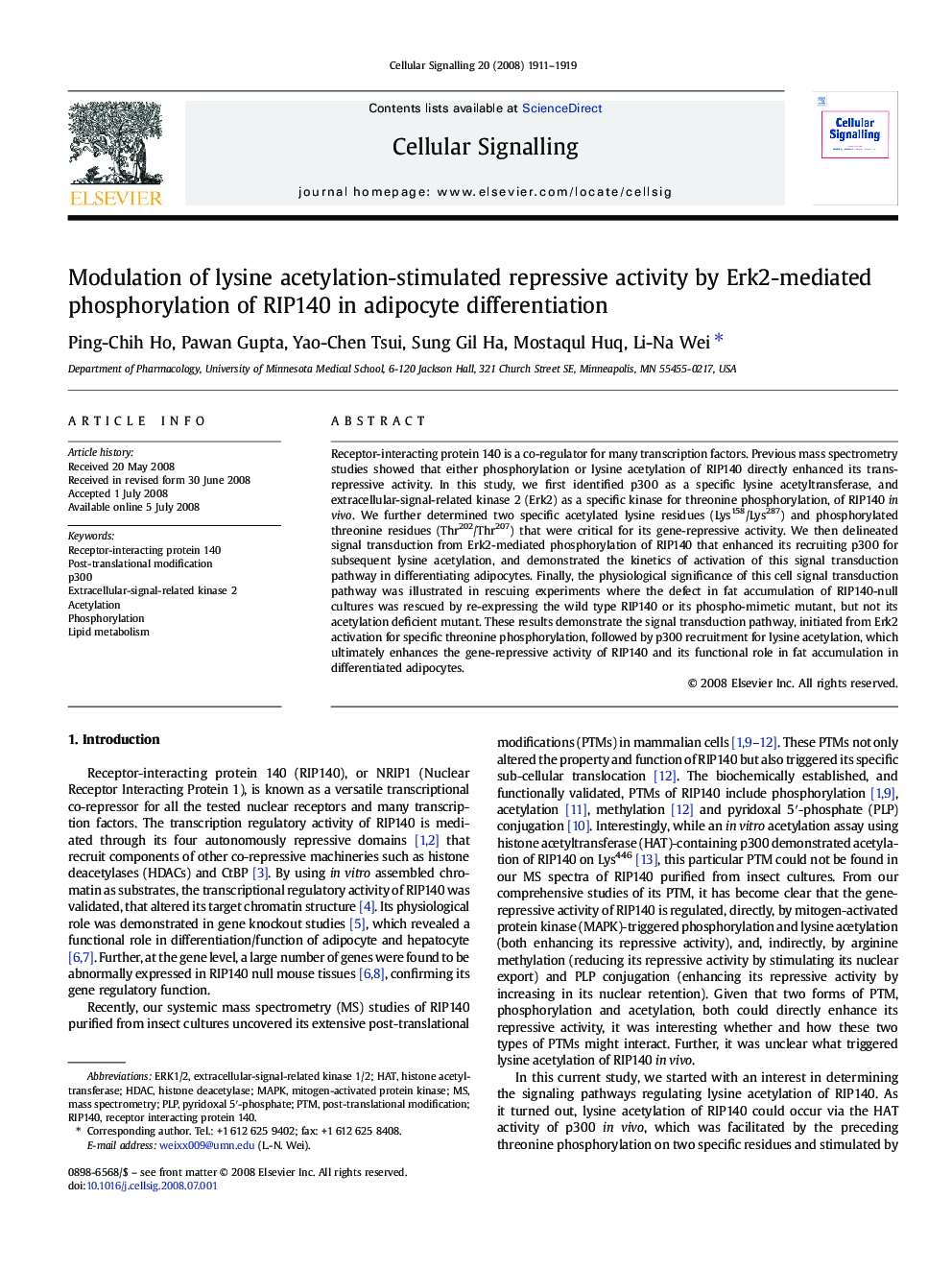| Article ID | Journal | Published Year | Pages | File Type |
|---|---|---|---|---|
| 1964231 | Cellular Signalling | 2008 | 9 Pages |
Receptor-interacting protein 140 is a co-regulator for many transcription factors. Previous mass spectrometry studies showed that either phosphorylation or lysine acetylation of RIP140 directly enhanced its trans-repressive activity. In this study, we first identified p300 as a specific lysine acetyltransferase, and extracellular-signal-related kinase 2 (Erk2) as a specific kinase for threonine phosphorylation, of RIP140 in vivo. We further determined two specific acetylated lysine residues (Lys158/Lys287) and phosphorylated threonine residues (Thr202/Thr207) that were critical for its gene-repressive activity. We then delineated signal transduction from Erk2-mediated phosphorylation of RIP140 that enhanced its recruiting p300 for subsequent lysine acetylation, and demonstrated the kinetics of activation of this signal transduction pathway in differentiating adipocytes. Finally, the physiological significance of this cell signal transduction pathway was illustrated in rescuing experiments where the defect in fat accumulation of RIP140-null cultures was rescued by re-expressing the wild type RIP140 or its phospho-mimetic mutant, but not its acetylation deficient mutant. These results demonstrate the signal transduction pathway, initiated from Erk2 activation for specific threonine phosphorylation, followed by p300 recruitment for lysine acetylation, which ultimately enhances the gene-repressive activity of RIP140 and its functional role in fat accumulation in differentiated adipocytes.
